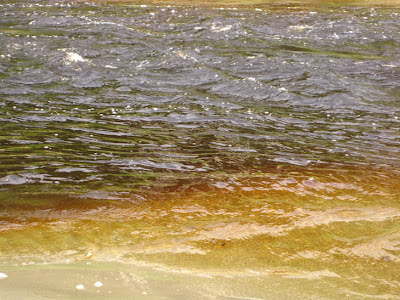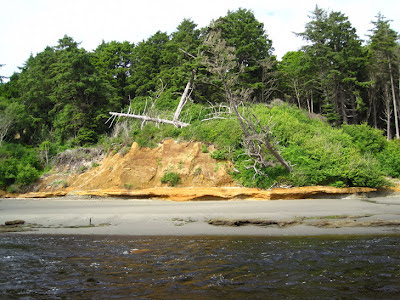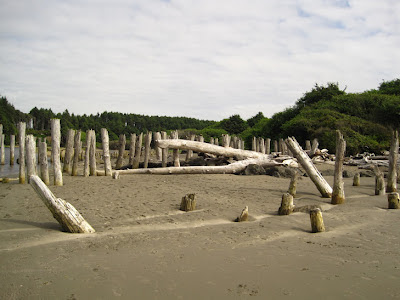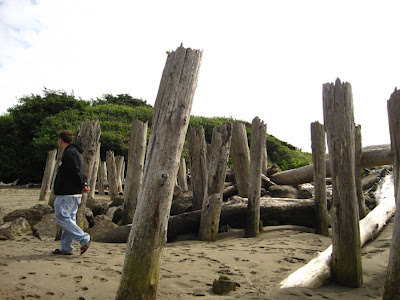Judo is a deep and exciting sport, and I think the public deserves at least an attempt to explain it. Most of the information out there on martial arts generally is geared toward learning how to do it—what I hope to do in this post is to give someone who has never learned judo enough information to watch the sport and enjoy it, without having to sign up for lessons or learn Japanese.
The beauty of judo is that it has relatively few, simple rules, but the sport that grows out of them is wonderfully complex. You don’t need to know the Japanese names of all 77 throws in the Kodokan syllabus to follow what’s going on. Hopefully, you just need to read this post.
So what the heck is judo anyway?
Judo is a combat sport, like boxing or wrestling. The goal is to defeat your opponent by throwing him onto his back, pinning him down, or using a submission hold to make him give up. The techniques of judo are descended from the empty-handed fighting methods of Japan's warrior class during the country's long, long feudal period. Despite its violent origins, the essence of judo is control. It is not a bloodsport—the first thing players learn is how to avoid injury.
There is no punching or kicking in judo. Apparently this needs to be emphasized, because my local paper claimed that judo players use throwing, joint-locking, and striking. So here it is again, to be clear. There is no striking in judo. There are no shivs in boxing. There are no flamethrowers in soccer.
What the heck is going on in a judo match?
I'm going to go through the different phases of a judo match and explain what to look for in each of them. These aren't official phases, like innings in baseball, but the players will be doing different things at different times and this should help you follow along.
A Judo contest is held between two players on a padded mat. The judo uniform is a heavy cotton jacket and pants similar to traditional dress in Japan. This uniform is one of the reasons that Judo plays out so differently from wrestling or MMA fighting: it gives the players something to grab onto as they try to move their opponent.
As I said before, you win a judo match by throw, pin, or submission. A partial throw or pin—I'll explain this later—is worth 1/2 point, and 1 whole point is all you need to win.
The beginning: grip fighting.
The first thing a player needs to do is get a good grip on his opponent. A judo match can begin with a few seconds of tentative grabs, blocks, and pull-aways, as each player tries to get leverage over his opponent without letting his opponent do the same. When someone has a good grip, he'll attack.
The meat: attacks.
Now the players try to throw one another. (It is possible, but extremely difficult and rare, to catch someone in a submission hold while standing; and obviously you can't pin someone while you're both standing up.) There is a lot of movement here as the players try to get each other off balance. Generally, you can avoid being thrown a certain way by setting your weight against it, but that opens you up to another throw. The players exploit this by attacking with combinations of throws, one after the other.
Pay attention to the players’ postures. Both players want to stay mobile and upright, where they are well-balanced and able to attack. A player leaning one way or another is vulnerable to a throw. A player with legs set wide and their hips low, often keeping their opponent at arm’s length, is in an extremely defensive posture, and will have a hard time attacking.
There are at least 77 recognized judo throws, but you don't need to know them all. I certainly don't yet. All you really need is to recognize three main types of throw.
- Major throws. Someone on the receiving end of a major throw can catch some serious air. These are throws where thrower turns his back on his opponent and pulls him over a part of his own body. This includes the shoulder throw, which is the classic "judo throw," e.g. the throw you've seen if you've only seen one judo throw in your entire life.
That’s throwing someone over your shoulder. Sometimes the throw goes over the hip or the leg instead, bus the result is about the same.
It’s easiest to catch someone in a major throw as they are moving forward, or pushing forward.
- Leg reaps. These are where the thrower wraps one his his legs around one of his opponent’s legs and sweeps it out from under him. In a way, these are the opposite of the major throws, because it is easiest to catch someone in one of these when they are moving backward or pulling you. The most common reap looks like this:
- Trips. Tripping is a perfectly valid attack in judo. Trips are subtle attacks that require good timing. Players often attempt trips to provoke a reaction that opens their opponent up for another throw. Honestly, you probably already know what it looks like when you trip a guy, but here's how it goes in judo:
For the throw to be worth a full point (and end the match) the thrower has to throw with speed and force, and the throwee needs to land on his back. If one of these doesn't happen, the thrower gets 1/2 point (or no point, if the throw was really sloppy) and the match continues.
Going to the mat: Grappling
When one or both players are on the mat a whole other dimension opens up. Sometimes a player will try to stand back up rather than engage a formidable grappler on the mat. This is where pins and submission holds become a factor. If the action comes to a standstill on the mat, the referee will separate the players and stand them back up to continue the match.
There are two defensive positions you should recognize on the mat.
- The “turtle” position is very defensive. The player “turtling” essentially curls into a ball so he can't be thrown, pinned, or put in a submission hold. The player attacking will try to turn the turtling player over, or find a way to attack his arms or neck. The referee will often halt the match when a player proves unable to break this position.
- The “guard” position is where a player is on his back and has the other player between his legs. This allows the guarding player to control his opponent’s hips and provides a lot of offensive options. A player in this position isn't pinned, even if his opponent is on top.
There are two types of legal submission holds in judo: chokes and arm locks. The player on the receiving end of one of these can tap the mat three times to signal that he gives up.
Judo has a lot of techniques that involve choking an opponent with his own jacket. If you see a player on the ground working his hands into his opponent’s lapel, that’s what he’s trying to do. They can also choke by wrapping their arms (or legs) around their opponent’s neck.
(An interesting point about choking in judo is that the players don’t try to close off their opponents’ air supply—they try to cut off the circulation of blood to their opponents’ brains by squeezing the sides of the neck. This works faster than attacking the windpipe, and it’s also safer for the person being choked. As a result, players caught in chokes often choose to keep fighting until they pass out instead of tapping. They usually come to a few seconds after the choke is released, a bit disoriented but uninjured. But please, please, don't go strangling your friends now because you read here that it was okay. People do die from this when it's done wrong—judo players know what they are doing.)
An arm lock is a technique that will break the other player’s
elbow if applied with enough force. The elbow is the only joint that it’s legal
to attack this way in judo; elbows are pretty durable, and they have a lot of
nerves in them so a player knows when they need to tap out. Judo players—especially Olympic-level
ones—can tell when they’re caught, so arm locks hardly ever result in injuries.
When you see a player trying to get control of one of his
opponent’s arms, he is probably trying for an arm lock.
At the end.
A lot of Olympic judo matches last until time runs out. If nobody has a full point, whoever has the highest score wins. If there's a tie, the match goes into a "golden score" period, which is perhaps a more civilized name for "sudden death overtime." Essentially any score at all is enough to win the game at that point. If that ends and there's still a tie, the referee and two judges vote on the winner.
At the end.
A lot of Olympic judo matches last until time runs out. If nobody has a full point, whoever has the highest score wins. If there's a tie, the match goes into a "golden score" period, which is perhaps a more civilized name for "sudden death overtime." Essentially any score at all is enough to win the game at that point. If that ends and there's still a tie, the referee and two judges vote on the winner.
What the heck are they saying? Some Japanese phrases you'll hear the referees shouting.
The terminology of judo is in Japanese, and though I've avoided using Japanese terms so far, there are a few you'll need to recognize.
“Hajime!” means “begin.” It’s the starting bell.
“Matte!” means “stop.”
“Ippon!” means that a player has won the match.
“Waza-ari!” means a player has gotten 1/2 a point.
“Yuko!” means a player has gotten a fraction of a point for a 15-second pin or a not-very-good throw.
“Osae komi!” means that one player has pinned the other. The clock starts on the pin when the referee announces it.
“Shido!” is a penalty. If the match ends in a draw, the player with a penalty will lose. Some things that can get a player a penalty are: putting their hands in the other player’s face, retreating from the other player, trying to “fake out” the other player with attacks that aren’t serious, or grabbing the opponent’s uniform in certain very aggressive ways without trying to throw. The first penalty called is just a warning. The second a player gets gives a yuko (fractional point) to the other player. A third turns that into 1/2 point.
“Hansoku Make!” is something you shouldn’t hear. It means that a player has broken the rules and is disqualified. Some things that can disqualify a player are: grabbing straight for the opponent’s legs, attempting an illegal submission hold such as a knee lock, or using a flamethrower.
There's more, of course. There's always more. But if your eyes haven't glazed over by this point, you've learned enough to watch some judo! Pick someone and root for them.
Addendum: The scores don't make sense! What the heck do the numbers mean?
For some reason, most scoreboards don't like that an ippon is 1 point, a waza-ari is 1/2 point, and a yuko is 1/∞. The scoreboards try to show the scores using whole numbers, which makes for a hybrid solution that's confusing for everyone. So forget what you know about math. A yuko is scored as 1, a waza-ari is scored as 10, and an ippon is scored as 100. Pretend they never invented numbers without ones or zeroes in them. 1+1=1. 10+1=11. 10+10=100.
Addendum: The scores don't make sense! What the heck do the numbers mean?
For some reason, most scoreboards don't like that an ippon is 1 point, a waza-ari is 1/2 point, and a yuko is 1/∞. The scoreboards try to show the scores using whole numbers, which makes for a hybrid solution that's confusing for everyone. So forget what you know about math. A yuko is scored as 1, a waza-ari is scored as 10, and an ippon is scored as 100. Pretend they never invented numbers without ones or zeroes in them. 1+1=1. 10+1=11. 10+10=100.








